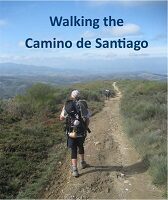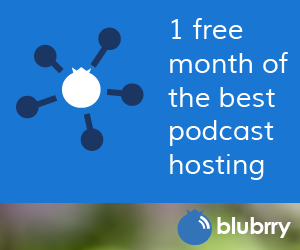Podcast: Play in new window | Download (Duration: 19:41 — 6.8MB) | Embed
Subscribe: Apple Podcasts | Spotify | Android | iHeartRadio | Blubrry | Email | RSS | More
Formulas for success in self-publishing. Dr Jon has collected formulas for self-publishing which help with audience reach and response.
A formula is like a recipe in cooking. For example a set of ingredients are used then tried and tested to make a great cake that is enjoyed by family and friends. A recipe for success.
In the scientific context a formula can also be a mix of chemicals and elements that go to make up a particular product like a fuel or a medicine.
Formulas usually have a series of elements and a quantity for each element that go to make up the formula.
If we were to give an exampe of a recipe for a great stir fry base, it would include one tablespoon of olive oil, two onions, two cloves of garlic, one chilli, three diced tomatoes as the recipe.
Then the cooking guide for mixing the ingredients together. For example: heat the olive oil in a wok, cook onions until transluscent then add garlic and chilli and stir. Add diced tomato to blend the flavours for 5 minutes before adding any further ingredients. (Please try this at home :).
In the mathematical realm the different elements that go into making up the recipe would be given an alpha numeric formula such as 1xtsoo (tablespoon olive oil) 2xo (onions) + 2xg (garlic) + +1xc (chilli) + 3xt (tomato) = stir fry base mixture.
Or look at any product on the supermarket shelf and it has a description of the different nutrient or food type that forms the product. An example such as soup would include sugar, salt, fat and carbohydrates. They are expressed as a percentage of the overall can of soup.
All of these are examples of formulas or in the scientific world the actual term is formulae.
Quantitative and Qualitative Factors for Formulas
The above formulas and recipes are related to real physical products or objects and the numeric allocation are called quantitative in modern science.
However the concept of formula can be applied to non physical or intangible items such as concepts, themes and even audience emotional and numeric responses and tendencies.
A mixture can be applied and ratios, percentages or numbers can be applied to allocate to the different concepts and themes. This is called ‘qualitative’ in modern science. The more recognisable example is in google’s use of algorithms which are based on behavioural and data relationships (in simple terms).
Self-publishing formulas
So lets have a look at how formulas can be created in self-publishing with the aim of creating a book that people love (and buy and love and refer to others).
In self-publishing two key factors we address in this article and podcast are:
-the establishment of a pipeline to your audience, and
-the connection to your audience through your pipeline .
For clarity, please note that we are talking about the process of self-publishing not the process of writing a manuscript and thus the use of pipeline as a metaphor.
Self-publishing is an act of connection to your audience and it starts after your manuscript is drafted and first contact is made to the outer world!
However your writing skills and story play a big part in the effectiveness of a pipeline to make it attractive, constant and reliable. You are after all a writer which is a powerful skill which can be harvested beyond the manuscript stage and into creation of the pipeline.
With these two factors for self-publishing success you can create a potent mix of what we call ‘pipeline’ elements and ‘connection’ methods that are mixed and designed to gain audience reach, adoption and the ultimate; alchemy.
The pipeline ‘elements’ enable ease of distribution.
the ‘connection’ methods create the connection of the book/article/short story to the target audience through the pipeline.
Let’s look at the elements and methods:
Pipeline Establishment
Your pipeline is built from two platforms or ‘presences’:
- your foundation presence and
- your campaign presence.
Lets look at each:
Foundation Presence (or Platform)
These are mentioned in our lab kit info graphic and in the infographic below:
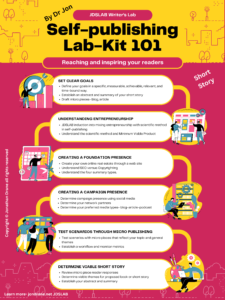
Your foundation presence is your web site. ‘Foundation’ relates to its longevity and the continuity of content that you create on your platform which you also own.
Think of your web site as land and your content the house you build on your land. You would not like to build your house on someone elses land!
Your parrallel important foundation presence is in the form of platforms like youtube and vimeo or apple podcast which keep your content alive over time and provide alternative media forms.
You can’t own them but their main aim is continous content that is searchable. Searchable is a key word which we revisit below in the form of SEO or search engine optimisation.
This is different to your ‘Campaign Presence (platform)
Campaign Presence (or Platforms)
Your campaign presence is used to ‘shout out’ to the world about your foundation presence ( your web site and youtube content) or new content or offerings on your web site.
Campaigns usually occur over short periods of time on social media platforms or in advertising. We try not to recommend advertising and seek for you to create your own organic presence at no or little cost.
Social media platforms use ‘posts’ which are pushed down by the most recent post. Your post ends up fading from the main presence on the social media platform over a few days and then it is relegated to eventual disappearance!
You can see that this is a temporary presence and apart from your personal profile on the social media platform it has little continuity of content like a web site or youtube channel.
Connection to your audience through your pipeline
Your pipeline includes infrastructure just like a rail line or a highway. The infrastructure relates to how you create your foundation and campaign presence to distribute to your relevant audience and also how it is accessed at the audience end of the pipeline.
Your distribution design will include a mix of foundation platforms and campaign platforms.
Success of your story reaching your audience lies in:
the way it is distributed: for example a choice of social media platforms, youtube and podcasts platforms that provide a constant reach to your audience.
and the way it is accessed: for example you might want to make sure your content is available through different devices (laptop, mobile phone, tablet) that suit certain audience types and are inclusive for people with disabilities as well as different language forms. Inclusivity is a huge audience.
In total, these elements relate to the potency of distribution to readers. Like an infrastructure that provides the easiest pathway to a reader or a highway that trucks run along to their destination marketplace.
Now lets take a look at how each element can be enhanced through the different forms of writing, some of which you will be good at and others that might be new to you.
The 5 connection methods
You have designed your pipeline infrastructure but now you have to send the truck down the road. This means you need to distribute your content down the pipeline. This is surprisingly in your hands and well within your skill level as a creative writer.
The starting points are in focusing on your content and what we call ; ‘the three summaries’:
the way it is summarised (talking to humans),
the way it is indexed (talking to bots),
the way it is promoted (enticing humans)
The pipeline can not prevail without good content and the way it reaches your new and existing audience. Here are the 6 writing methods that are part of the overall pipeline:
Within each dimension there is a writing type which can be looked at as a connection ingredient and includes:
-Content writing: The creation of the content in the main body of the book, short story or article in the form of a manuscript. The inside story. The type of story also.
-Abstract writing: The description of the book and its audience and objectives. The story about the book ‘outside looking in’ .
-Copy Writing : The promotion of the book to the outer world. The heralding of the story.
-SEO Writing: SEO stands for search engine optimisation. The indexing of the content to reach google or search engine categories, topics and tags etc
-Meta writing: A sub-set of SEO which is the SEO’s form of abstract. This meta description talks to the robots of the internet through algorithms and AI.
At this point we introduce our infographic that ties these concepts together like a matrix or potential recipe:
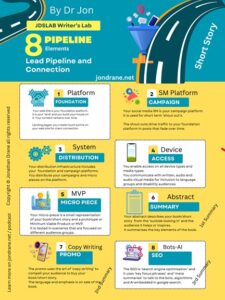
So lets take a look at each of the ‘pipeline elements’ and ‘connection ingredients’ and mix them together:
Content and the type of story:
Dr Jon discovered early that each writing form (book, blog, article, short story, poem, essay) reaches out to people in different ways:
-A book that tells a story that will remain with the reader for life,
-the poem that inspires a child to write creatively,
-a short story that dives into an exotic realm,
-an essay that compels people to change the world…
Each form of writing has an ‘alchemy’ (traditionally defined as turning lead into gold!) that reaches and grabs the reader and inspires and compels them to tell others about its delights and revelations.
We deal with alchemy itself again in our podcast but the concept ties together a series of factors that combine to create reader interest, excitement and even loyalty.
In addition a particular story line is made up of content that can be used like an ingredient and combined with other writing forms that create reader interest and reach.
For now it is important to categorise the content of your manuscript as the ‘internal content’ and source of reader satisfaction. The other elements and ingredients (see next) lead your reader to the internal content but use the magic of the internal content in different writing forms.
The Three Summaries
Summary of Story
This is the ‘outside looking in’ summary of the story. This is not written in the same context as the internal content itself but descibes the essence of the book and how it relates to the reader’s needs and satisfactions.
As an example, an abstract of an academic article is the most ‘objective’ version of this. But there is much to be learned from academic abstract and methodology.
We have included an open source abstract template used in the academic world on our web site. This includes objectives like importance, methodology, results and implications. This is a heavy mix of outputs but in the academic world evidence is the key.
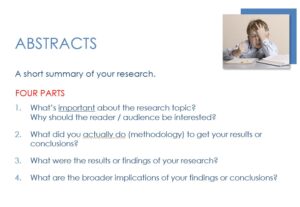
There can however be lessons learned for fiction and non-fiction writers who are researching and using historical data as an example that could use these markers.
There is also the use of ‘copy writing’ in this element as it uses logic, emotion and compulsion (the three pillars of persuasion ; logos, ethos and pathos) to draw the reader in.
Promotion of Story (pushing it to your reader)
The promotion of the story takes the first two elements (story and summary) and builds a case for reading and purchase of the book based on features and points of satisfaction and need.
Promotion uses the art of ‘copy writing’ to provide value points to the overal offering.
Copy writing uses creative content to compell your audience to read your story. It can be based on a marketing pitch or a sales pitch.
Many writers can adapt from content writing creative books to copy writing great ‘copy’.
Copy writing and promo ‘pushes’ your book into the outer world beyond your manuscript.
Indexing of story (talking to robots)
Search enging optimisation or SEO is also used in promotion of the book, but it is on a pull basis not a push basis like promo. By this SEO sets up search engine descriptors about your book on your web site which respond to google searches continuously, (and while you sleep).
SEO uses ‘key focus phrases’ and ‘meta descriptions’ which talk to the ‘bots’ of the search engines and the more recent AI and algorithms that trawl the internet helping to reduce your book to a series of search terms.
With billions of google searches every day, the power of this pull promotion is palpable and forms the foundation pipeline reach for your book and your web site.
Distribution of Story (Media types)
Distribution not only relates to platforms that are used to connect with readers,but the actual media type that is offered including book, e-book, podcast, audio-book and video. Your foundation presence is your web site but you can created parrallel foundation presence on platforms like youtube and podcast hosts as noted earlier.
People think that social media (SM) is a foundation presence. That is true for your own SM personal profile but the posts fade into oblivion eventually while your foundation presence is for keeps.
Access to Story
These media forms are also connected to device forms such as PC, Laptop, smart phone and tv.
Accessibility through preferred media and device is a crucial enabler of reader conversion. Their favourite media and device and platform are three sub-elements of the overall formula.
This relates to sight and hearing impaired readers, readers with disability as well as readers from different language cultures.
The Right Mix of Elements (Formulae)
If you were to turn this into a formula like a recipe you could in simple terms create a mixture for each of the elements which is determined by the book topic and reader and reach you are trying to achieve. This is an act of art and science and here we can not be too prescriptive because you need to test the mix in certain scenarios.
However w have create a pipeline infographic matrix above that acts as a prompt for you to design the relevant pipeline elements and connections for your self-publishing endeavour for a particular book, short story or article.
This is a creative process that you are well equipped to engage with as a writer and can be used as a matrix for setting up your own pipeline and then adapting it to different story types that you might have.
We hope you have enjoyed reading or listening to our article/podcast.
Remember we provide on demand webinars for your writer’s group or an individual zoom session with Dr Jon. See below

Listen Carefully! 🙂 Get Your 25% Discount on our BYO Group Webinars. Get 3 out of 3 questions right.
Don’t Forget to Take our Quick Quizz based on listening to JDSLAB Podcast Episode 4: ‘Formulas for success in self-publishing’.
Dr Jon’s Tips
Create your own podcast with blubrry. We have found blubrry to have an amazing and comprehensive platform to create podcasts even if you are a beginner. Dont miss our discount code JDSLAB2023 details are below.
Get your first month of Blubrry podcasting hosting free with the promo code JDSLAB2023. Use the Hosting Estimator on their site to determine the best plan for you and don’t forget, that’s JDSLAB2023 for your first month free.
Learn More
Learn More:
JDSLAB Podcast Introduction-Dr Jon’s Self Publishing Laboratory
